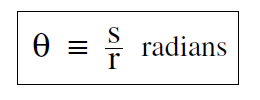
تاريخ الفيزياء

علماء الفيزياء


الفيزياء الكلاسيكية

الميكانيك

الديناميكا الحرارية


الكهربائية والمغناطيسية

الكهربائية

المغناطيسية

الكهرومغناطيسية


علم البصريات

تاريخ علم البصريات

الضوء

مواضيع عامة في علم البصريات

الصوت


الفيزياء الحديثة


النظرية النسبية

النظرية النسبية الخاصة

النظرية النسبية العامة

مواضيع عامة في النظرية النسبية

ميكانيكا الكم

الفيزياء الذرية

الفيزياء الجزيئية


الفيزياء النووية

مواضيع عامة في الفيزياء النووية

النشاط الاشعاعي


فيزياء الحالة الصلبة

الموصلات

أشباه الموصلات

العوازل

مواضيع عامة في الفيزياء الصلبة

فيزياء الجوامد


الليزر

أنواع الليزر

بعض تطبيقات الليزر

مواضيع عامة في الليزر


علم الفلك

تاريخ وعلماء علم الفلك

الثقوب السوداء


المجموعة الشمسية

الشمس

كوكب عطارد

كوكب الزهرة

كوكب الأرض

كوكب المريخ

كوكب المشتري

كوكب زحل

كوكب أورانوس

كوكب نبتون

كوكب بلوتو

القمر

كواكب ومواضيع اخرى

مواضيع عامة في علم الفلك

النجوم

البلازما

الألكترونيات

خواص المادة


الطاقة البديلة

الطاقة الشمسية

مواضيع عامة في الطاقة البديلة

المد والجزر

فيزياء الجسيمات


الفيزياء والعلوم الأخرى

الفيزياء الكيميائية

الفيزياء الرياضية

الفيزياء الحيوية

الفيزياء العامة


مواضيع عامة في الفيزياء

تجارب فيزيائية

مصطلحات وتعاريف فيزيائية

وحدات القياس الفيزيائية

طرائف الفيزياء

مواضيع اخرى
Tangential Distance, Velocity and Acceleration
المؤلف:
E. R. Huggins
المصدر:
Physics 2000
الجزء والصفحة:
337
29-11-2020
2376
Tangential Distance, Velocity and Acceleration
So far we have used the model of a rotating shaft to illustrate the concepts of angular distance, velocity and acceleration. We now wish to shift the focus of our discussion to the dynamics of a particle traveling along a circular path. For this we will use the model of a small mass m on the end of a massless stick of length r shown in Figure (1). The other end of the stick is attached to and is free to rotate about a fixed axis at the origin of our coordinate system. The presence of the stick ensures that the mass m travels only along a circular path of radius r. The quantity θ( t ) is the angular distance travelled and ω( t ) the angular velocity of the particle.
 .......(i)
.......(i)
When we are discussing the motion of a particle in a circular orbit, we often want to know how far the particle has travelled, or how fast it is moving. The distance s along the path (we could call the tangential distance) travelled is given by Equation (i) as
 ........(1)
........(1)

Figure 1: Mass rotating on the end of a massless stick.
The speed of the particle along the path, which we can call the tangential speed vt, is the time derivative of the tangential distance s(t)

where r comes outside the derivative since it is constant. Since dθ (t) /dt is the angular velocity ω, we get

The tangential acceleration at , the acceleration of the particle along its path, is the time derivative of the tangential velocity

where again we took the constant r outside the derivative, and used α = dω/dt .